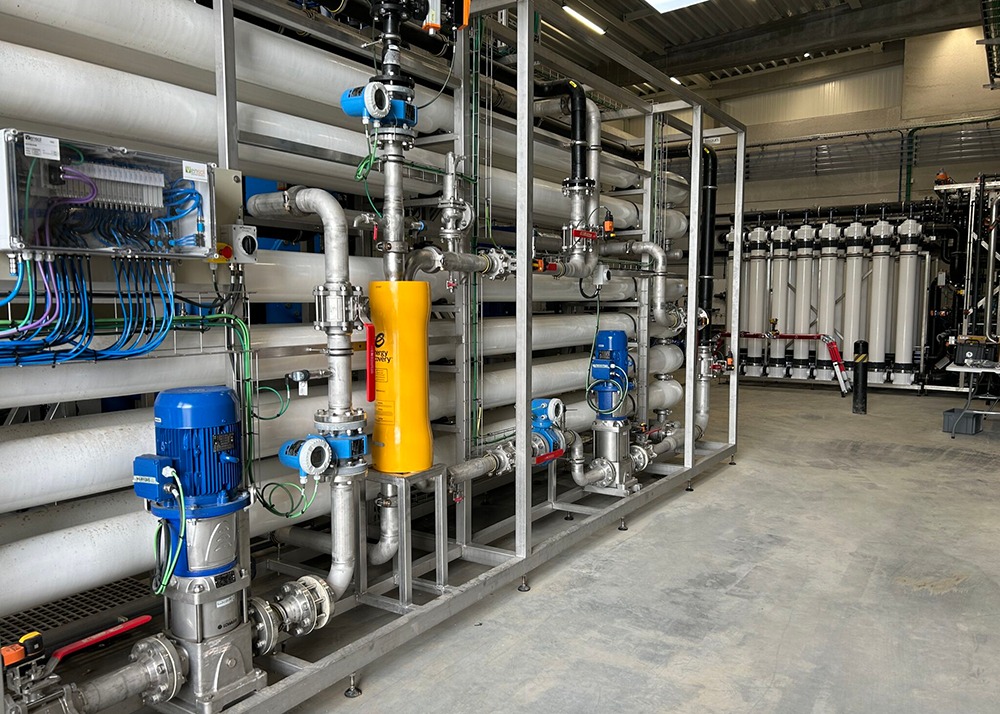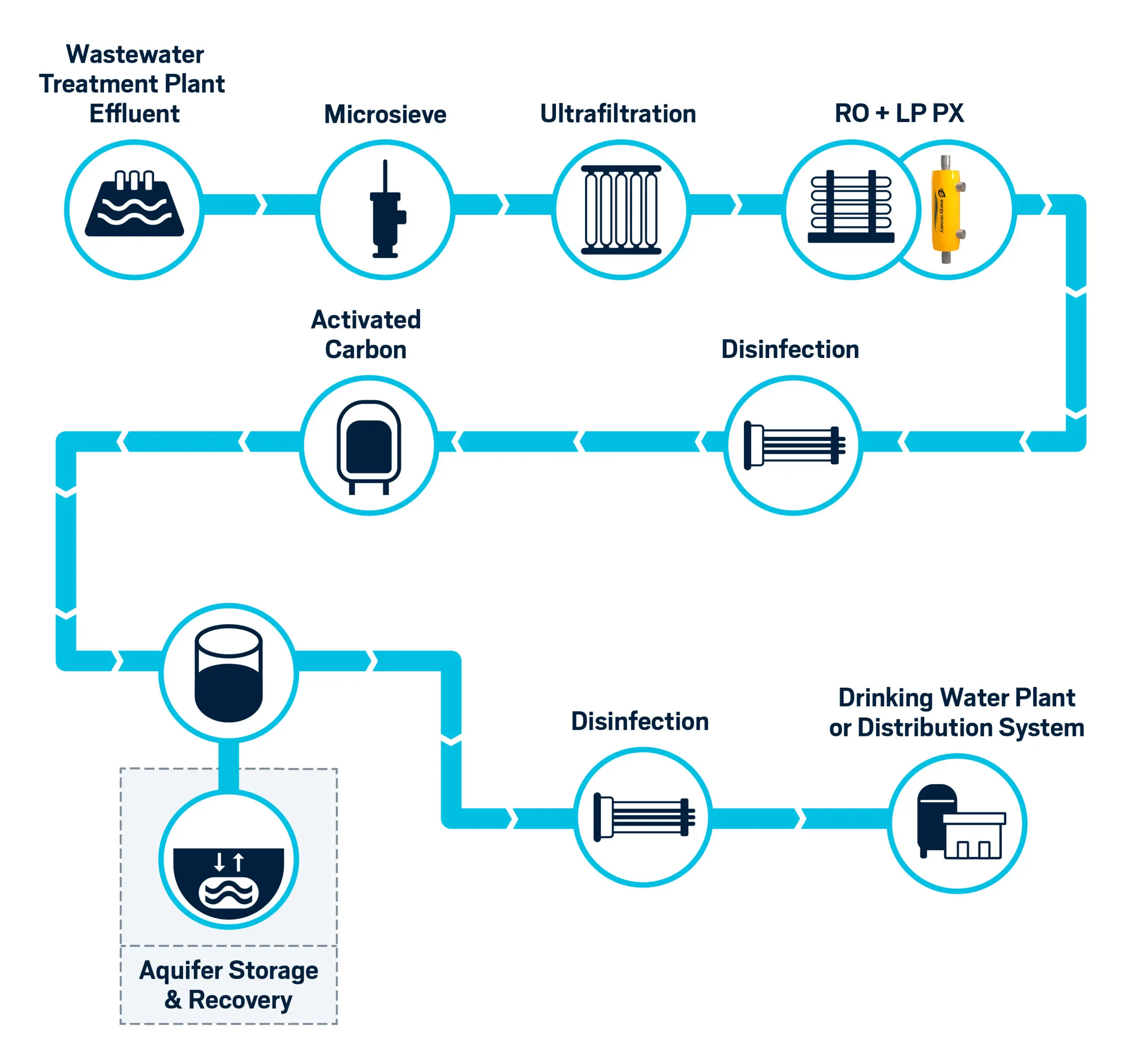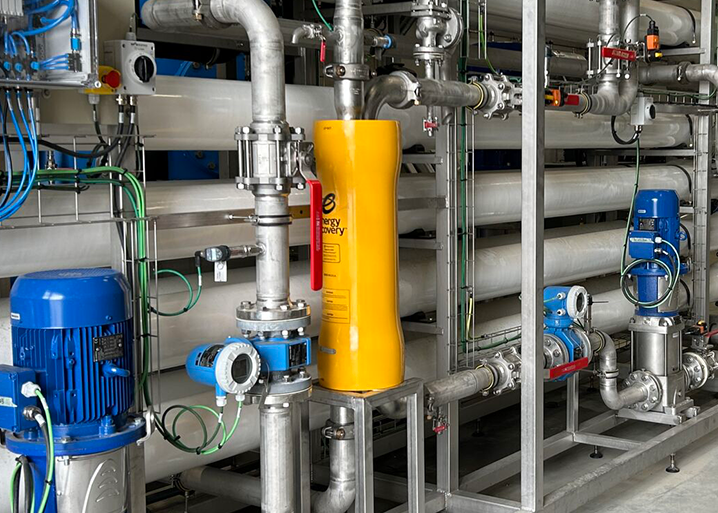The Challenge

In the heart of Flanders, Belgium, a groundbreaking water reuse initiative is reshaping the future of drinking water. Faced with growing water scarcity due to climate change, the new Water Production Center (WPC) Hofstade (City of Aalst) has emerged as a beacon of resilience and innovation. This visionary plant pioneers one of Europe’s first direct potable reuse (DPR) systems, reusing the effluent of the municipal wastewater treatment plant (WWTP) in Aalst. The project looks to also integrate aquifer storage and recovery (ASR) as a form of seasonal water buffering, storing water during wet periods and supplying it during dry ones, effectively acting as a water battery that scales with shifting demand. All of this is made possible through advanced reverse osmosis (RO) and energy recovery technology.
A Region Under Pressure: Water Scarcity and the Search for Solutions
Flanders is experiencing increasingly frequent droughts and depleted water sources. In response, the Flemish Government launched the Blue Deal, a sweeping initiative to combat water scarcity through water reuse and diversification. The new WPC Hofstade, led by Waterunie (a joint venture of Farys and De Watergroep), in collaboration with Belgian water specialist and OEM Nuoro, along with Aquafin and research platform CAPTURE, was tasked with developing a reuse plant that could safely provide drinking water from treated effluent.
Throughout the design of the DPR plant, attention was given to minimizing its environmental impact, by reducing the chemical consumption and operating the system as energy-efficient as possible. For example, the high operation pressures associated with RO systems posed a challenge.

